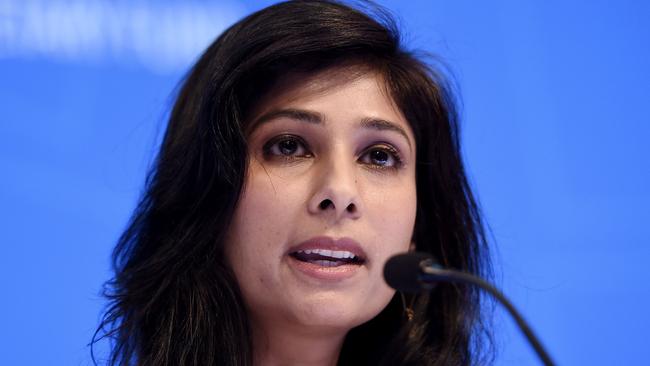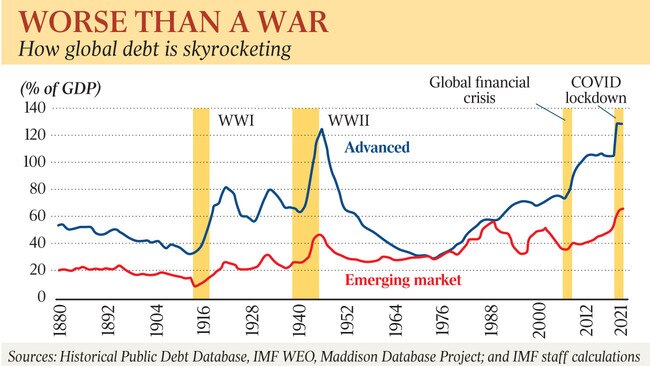Coronavirus: Global government debt will hit record highs in 2020, IMF says
The debt amassed by governments will hit its highest levels ever this year as policymakers spend a combined $US11 trillion to support their economies.

Global public debt will surpass 100 per cent of world GDP this year, the highest level in recorded history as governments commit close to $US11 trillion ($15.4trn) to support their economies through the health crisis, the International Monetary Fund has said.
IMF chief economist Gita Gopinath and Fiscal Affairs Department director Victor Gaspar said in the face of the COVID-19 recession, “a massive fiscal response has been necessary to increase health capacity, replace lost household income and prevent large-scale bankruptcies”.
But this “unprecedented spending”, which in advanced economies they estimate is worth nearly 9 per cent of GDP, has contributed to global public debt climbing past the post-World War II peak to over 100 per cent.
Government borrowing as a proportion of world economic output is now at its highest in data going back to 1880, the IMF said.
Ms Gopinath and Mr Gaspar said “the need for continued fiscal support is clear, but this begs the question of how countries can finance it without debt becoming unsustainable”. They said that this year fiscal deficits in advanced economies are expected to be more than five times higher than the IMF had predicted pre-COVID, and more than double in emerging market economies.
In advanced economies, this would lead to a historic 26 percentage-point leap in public debt to 131 per cent of GDP, and a 7 per cent jump in emerging market countries to 63 per cent of GDP.

In Australia, Treasury forecasts gross Commonwealth debt will climb to 45 per cent of GDP by the middle of 2021, well short of global averages.
The IMF echoed the view of Reserve Bank governor Philip Lowe that servicing the additional debt will be made easier by record low financing costs for many governments.
“Ensuring a path back to sustainable fiscal balances will … be key in countries that entered this crisis with already elevated debt and low growth,” Ms Gopinath and Mr Gaspar said.
The IMF figures also showed that at nearly 10 per cent of GDP, Australia’s direct fiscal spending is the fourth highest among 20 countries analysed by the Washington-based organisation.




To join the conversation, please log in. Don't have an account? Register
Join the conversation, you are commenting as Logout